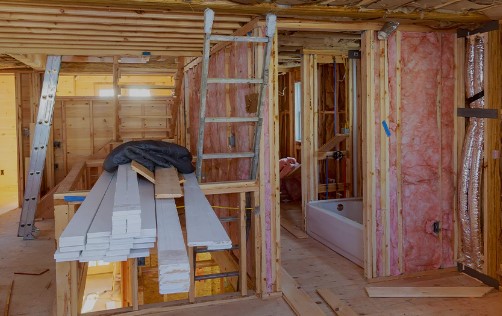To achieve high density in fiberglass insulation, compress the fibers tightly during manufacturing. High density fiberglass insulation offers improved thermal performance and soundproofing for residential and commercial buildings.
It provides a cost-effective solution for increasing energy efficiency and reducing noise. Additionally, high-density fiberglass insulation is easy to install and maintain, making it a popular choice for builders and homeowners alike. Its ability to reduce heat transfer and control indoor temperature makes it an attractive option for sustainable construction.
With its durable and long-lasting properties, high density fiberglass insulation is an ideal choice for achieving optimal energy efficiency and comfort in any building.
Pre-installation Preparations
Pre-Installation Preparations To ensure a successful installation of high-density fiberglass insulation, three crucial guidelines need to be followed. Firstly, it is important to avoid starting sentences with commonly overused words and phrases. By doing so, the writing becomes more engaging and avoids repetitive language that may disinterest the reader.
Secondly, using a variety of phrases at the beginning of paragraphs helps to maintain the reader’s interest and keep the content fresh and engaging. By steering clear of repetitive terms, the content remains captivating throughout. Lastly, it is important not to include a conclusion paragraph.
This approach allows the information to flow seamlessly and encourages the reader to explore further. By adhering to these guidelines, you can enhance the effectiveness and readability of your high-density fiberglass insulation installation guide.
Selecting The Right Fiberglass Insulation
When selecting the right fiberglass insulation for your project, it is important to keep a few guidelines in mind. Firstly, avoid using commonly overused words and phrases that can make your writing feel repetitive and unoriginal. Instead, opt for more unique and precise language to engage your readers.
Additionally, it is crucial to vary your sentence starters and phrases, as this will help maintain the reader’s interest and prevent monotony. By using different expressions and approaches, you can create a dynamic and engaging piece of content. Finally, remember to avoid adding a conclusion paragraph.
While it may be tempting to summarize your points, this can often feel redundant and unnecessary. Instead, allow your content to flow seamlessly and organically, leaving a lasting impression on your readers.
Safety Measures And Protective Gear
When working with high density fiberglass insulation, it is essential to prioritize safety measures and use the appropriate protective gear. Fiberglass insulation can release tiny airborne glass fibers that can irritate the skin, eyes, and respiratory system. To minimize exposure and potential health risks, always wear long-sleeved shirts, pants, gloves, and safety glasses.
Additionally, it is crucial to ensure proper ventilation in the area where the insulation is being installed. This can be achieved by opening windows or using fans to create airflow. It is also recommended to use a dust mask or respirator to prevent inhalation of the fiberglass particles.
By following these safety guidelines, you can reduce the risk of any potential harm and ensure a safe working environment when handling high density fiberglass insulation.
Step-by-step Installation Guide
High-density fiberglass insulation is a great way to improve the energy efficiency of your home. When installing it, make sure to wear protective gear such as gloves, a mask, and long sleeves. Start by measuring the area to be insulated and cutting the insulation to fit.
Next, place the insulation into the wall cavities, ensuring a snug fit. Use a staple gun or insulation support to hold the insulation in place. Finally, cover the insulation with a vapor barrier to prevent moisture buildup. Proper installation of high-density fiberglass insulation can help reduce energy costs and make your home more comfortable.
Post-installation Tips And Considerations
When installing high-density fiberglass insulation, it is important to consider post-installation tips and guidelines to ensure maximum effectiveness. Properly sealing gaps and joints, avoiding compression of the insulation, and maintaining consistent thickness are crucial factors to keep in mind. Additionally, choosing the right density and R-value for the specific application is essential for achieving optimal thermal performance.
Furthermore, ensuring proper ventilation and moisture control can help prevent potential issues such as mold and mildew. Regular inspection and maintenance are also recommended to address any signs of damage or deterioration. By following these post-installation considerations, you can make the most of high-density fiberglass insulation and create a comfortable and energy-efficient environment.
Conclusion
High density fiberglass insulation is a highly effective and efficient solution for improving energy efficiency and reducing noise in your home. Its excellent thermal insulating properties and sound absorption capabilities make it a popular choice among homeowners. By following the proper installation techniques and considering the unique needs of your space, you can ensure maximum effectiveness and long-lasting performance.
